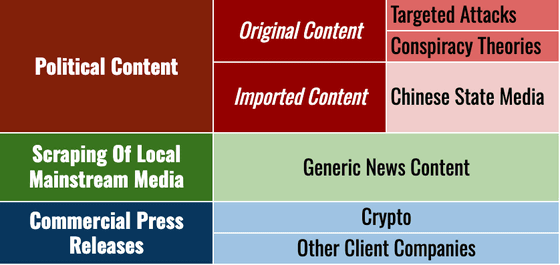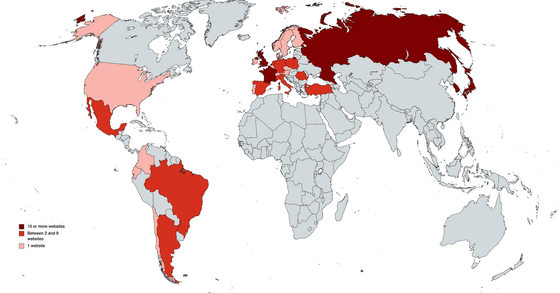Operation ``PAPERWALL'' is being developed to spread pro-China false information on news sites masquerading as news organizations from various countries.

A network of at least 123 websites run by Chinese companies ran an operation called PAPERWALL , which spread pro-Beijing disinformation and emotive attacks on news sites masquerading as news organizations in 30 countries. It became clear that there was.
PAPERWALL: Chinese Websites Posing as Local News Outlets Target Global Audiences with Pro-Beijing Content - The Citizen Lab

China is developing strategies to increase its influence both online and offline. One of these seems to be a strategy to spread pro-China disinformation mixed in with a large amount of content on news sites while pretending to be local news organizations in Europe, Asia, and Latin America. The Citizen Lab at the Munk Institute for International Studies, University of Toronto, Canada, has named it ' PAPERWALL .'
The existence of an operation similar to PAPERWALL was reported by cybersecurity company
The Chinese PR company Shenzhen Haimaiyunxiang Media (commonly known as Haimai) is running the operation, and one feature is that the Chinese government is not leading it, and private companies are playing a larger role.
Operation PAPERWALL, like Operation HaiEnergy, uses a lot of content from the release distribution platform Times Newswire. The Citizen Lab says it has found evidence that seemingly innocuous content distributed by the Times Newswire is regularly mixed with pro-China political content, including ' ad hominem attacks .'
Previously, similar operations have not had much of a negative impact, but Operation PAPERWALL has increased the number of operational sites, adapted the content to local languages and content, and made it easier for local media and readers to understand their intentions. The risk of contact and spread is increasing.
Below is a diagram showing the site structure. It is broadly divided into three areas: 'Political Contents,' 'Scraping Of Local Mainstream Media,' and 'Commercial Press Releases.' It features offensive articles, conspiracy theories, and articles from Chinese state media.

Below is a map showing the countries where operational sites are deployed. Countries in light pink have one confirmed site, countries in red have between two and nine sites, and countries in dark red have 10 or more confirmed sites. South Korea had the highest number of cases with 17 cases, followed by Japan in second place with 15 cases.

The strategy sites developed for Japan include domains that are likely to be used for news sites, such as 'fukuitoday[.]com,' 'sendaishimbun[.]com,' and 'nikkonews[.]com,' as well as domains such as 'fukuoka-ken.' Prefectural names such as '[.]com', 'tokushima-ken[.]com', and 'saitama-ken[.]com' were used.
In addition, articles attacking critics of the Chinese government used in the strategy are usually deleted from the site after a certain period of time.
Related Posts:
in Note, Posted by logc_nt







